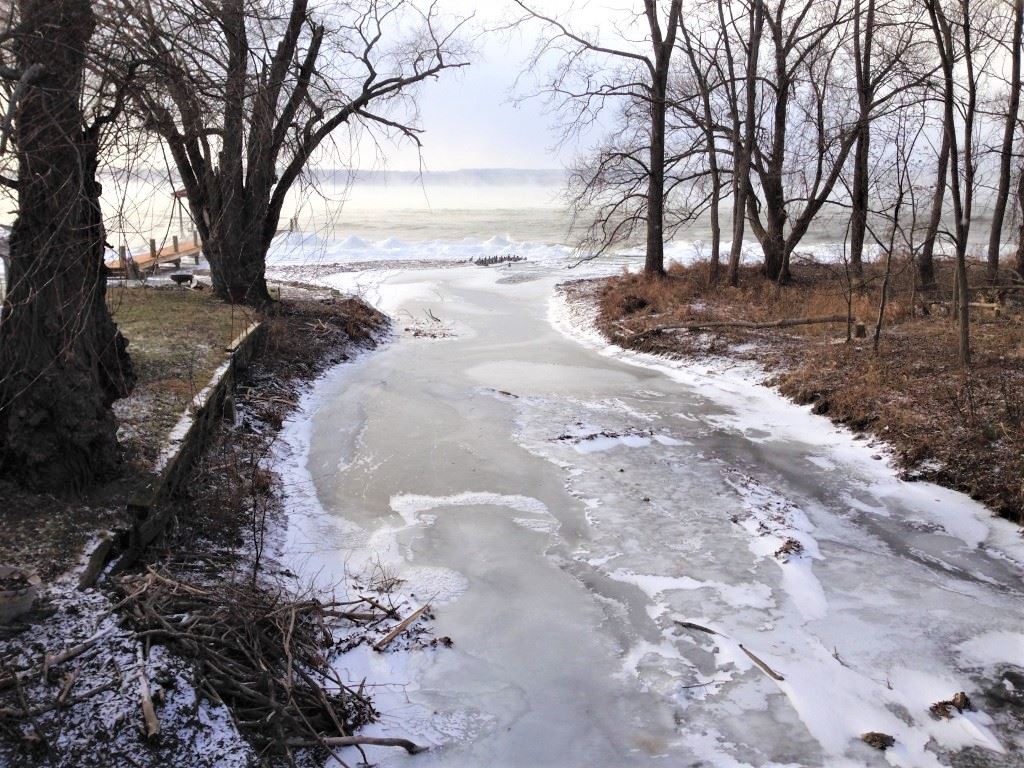 Written by the Lake Friendly Living Coalition of the Finger Lakes
Written by the Lake Friendly Living Coalition of the Finger Lakes
Winter is here and so are ice and snow. Central New York (CNY) is no stranger to ice and snow. In fact, many residents consider themselves “pros” in knowing how to drive in the snow, shovel a sidewalk, or clear a driveway before work. We know what we are doing … but do we? Do we know what impact our winter de-icing actions are having on our environment?
It is estimated that the U.S. uses 15 million tons of de-icing salt per year. We use a lot of salt in CNY to keep our roads and walkways safe, but all that salt ends up somewhere. The salt can eventually seep into the ground or runoff into streams and lakes. It can impact groundwater that supplies drinking water wells, and the salt can enter the water we drink from Skaneateles Lake. Salt can be harmful to aquatic life, plants, and drinking water supplies. Here is a breakdown of salt products and things you should know about them:
Rock salt (sodium chloride) is the most commonly used salt, but it can contain cyanide (used as an anti-caking agent that can be lethal to aquatic life) and is the most detrimental for plants.
Calcium chloride is considered a superior choice when compared to rock salt because it does not contain cyanide. However, it can also damage plants. Calcium chloride costs approximately three times more than rock salt, but only one-third as much is needed. Calcium chloride is also effective at temperatures down to -25°F. Other de-icing salts lose effectiveness between 25-0°F.
Magnesium chloride is considered the least toxic de-icing salt because it contains less chloride than either rock salt or calcium chloride, making it safer for plants and animals.
Calcium magnesium acetate (CMA) is considered the best overall choice for safely melting ice. It is less toxic than deicers containing chloride but can cost substantially more than rock salt.
All the items listed above can be purchased online or at your local big box or chain hardware store.
It is important to practice careful restraint with salt application and consider other de-icing methods. There are many ways to keep walkways safe, while also minimizing pollution to our waterways. There are some salt alternatives that can be less damaging to properties and landscaping. These products are considered better for the environment. Sugar Beet Juice is one of the most environmentally friendly ways to de-ice slippery surfaces. The juice from the sugar beets lowers the freezing point of ice and snow. It is completely safe for roads, plants, pets, concrete, and cars. The one downside is that the sugar beet juice, if it enters streams and lakes, can attract bacteria which can use up oxygen in water. Sand and coffee grounds, when applied on top of snow or ice, help absorb sunlight to melt snow and ice. They also provide traction. However, sand is still not a perfect alternative because it can eventually blow or wash into streams or lakes where it can damage aquatic habitat and create unwanted substrate for plant growth. If you use sand, remember to sweep, and collect it as soon as weather conditions permit. Kitty litter is similar to coffee grounds and sand in that it will provide traction on slippery surfaces though it will not melt the snow. These are some alternative products to salt that can have better impacts on our environment. As a consumer, please consider alternative products to use when you plan for an upcoming snowstorm.
Other tips for snow and ice removal include:
● Look for “pet safe” de-icing products. If a product is pet friendly, it is likely to be eco-friendly
● Apply de-icing products before a winter storm
● Disperse ice melt properly and continue to disperse during a storm.
● Clear as much snow and ice before applying de-icing products. Don’t use salt as a substitute for shoveling
● A mechanical spreader can help achieve proper coverage. The proper coverage rate is about one cup per square yard
Some properties may be unable to avoid salt that is applied to municipal roads. The salt that is applied can accumulate alongside the road. In the spring, it is important to wash salt spray off plants that are near the road, sidewalk, or driveway and to flush the soil with fresh water. Call your local road maintenance department to find out what type of de-icer they use near your landscape. You can also advocate for your municipality to switch from using salt to more lake friendly de-icing alternatives, like sugar beet juice. Gardeners should research the growing requirements of plants to determine their tolerance to road salt. A few salt-tolerant species include: bearded iris, bee balm, daylilies, garden phlox, rose of sharon, hydrangea, sumac and witch hazel. Cornell Cooperative Extension is a great resource for identifying native plant landscaping suggestions cce.cornell.edu.
Another de-icing product to consider is windshield washer fluid. Washer fluid is essential for dangerous winter driving. However, most washer fluids contain toxic methanol and phosphates that can contribute to harmful algal blooms in our lakes. One spray of windshield washer fluid may not seem like enough to do much damage, but when you think about how many gallons your car uses over the course of the winter months and then consider all of the other cars on the road. The cumulative impacts can be massive. The next time you need to purchase windshield washer fluid, consider buying a lake friendly alternative that does not contain toxic methanol or ammonia. There are concentrated liquids that are as effective and can be less costly than traditional washer fluid products. One lake friendly alternative is the Nextzett Anti-Wash Windshield Washer Fluid.
We all can do more to protect our precious water quality. If we act together, we can collectively be the solution to winter pollution.
.png)